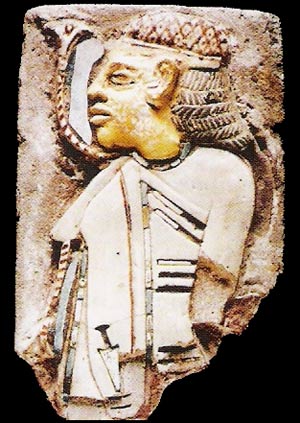The mysterious words in Egyptian mantra
A mantra to chase away snakes from the tombs of Egyptian princes, dating back to the Canaanite era 1,500 years ago, was discovered to be the oldest Semitic word ever.
The phrase, scattered in Egyptian religious texts found in the underground chamber of the pyramid south of Cairo, has angered Egyptian experts for the past century. It is only decoded until people discover a relationship with Semitic.

Canaanite . (Photo: Cit.cornell.edu)
In 2002, one of the Egyptologists sent unedited inscriptions to Richard Steiner, a Semitic language professor at Yeshiva University in New York. Steiner discovered that the text is the language used by Canaanite between the 25th and 35th centuries BC.
"This is the oldest word in Semitic language , " Steiner said. The oldest known Semitic word was from the 24th century BC.
"This is very important because it dates back to the 3rd millennium BCE, so this is the oldest pre-Canaanite script and also the oldest Semitic word ever known , " Moshe Florentine, language expert learn to speak.
The fact that ancient Egyptians used mantras proved a close relationship at the time with Canaanites. While the ancient Egyptians considered their culture and religion superior to those of their neighbors in the north, they still had to do everything to protect the kings of the kings from the poisonous snakes.
Believing that some Semitic speaking serpents of Canaanite people, the Egyptians gave Semitic-language spells to both sides of the coffin to ward off the enemy.
"Come here, come to my mother's house , " a Semitic note meant as the mother of the snake was talking to pull it out of the grave In another line, the snake was treated as a lover: "Please return to this side, my lover ".
The Egyptian and Semitic words are two integral parts of the mantra and are inseparable. Therefore, Egyptian experts could not fully understand the spiritual texts until Steiner decoded the words.
MT
- Revive the book containing the mysterious mantra of the ancient Egyptians
- Mysterious Egyptian statues themselves move
- 'Excavation' mysterious electric energy from ... Egyptian crypt
- Fix Windows errors easily with RegFix Mantra
- Decipher the mysterious sign in the Egyptian desert
- Mysterious words on the 800-year-old ancient sword
- 3 strange theories about the Egyptian pyramid
- Six mysterious archaeologists died after opening the ancient Egyptian coffin
- Decode the mystery of the Egyptian mummy collar
- Discovered a huge mysterious tunnel in the Egyptian pyramid
- Found strange structures longer than Egyptian pyramids
- Mysterious 3,200 years ago in Egyptian literature and the Bible
 Discovered an ancient centipede fossil 99 million years old
Discovered an ancient centipede fossil 99 million years old Discovered bat-like dinosaurs in China
Discovered bat-like dinosaurs in China Discovered a 200-year-old bronze cannon of the coast
Discovered a 200-year-old bronze cannon of the coast Discover 305 million-year-old spider fossils
Discover 305 million-year-old spider fossils